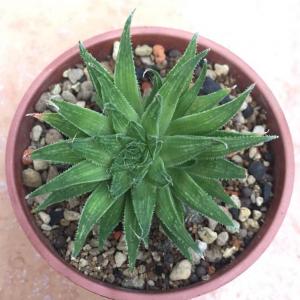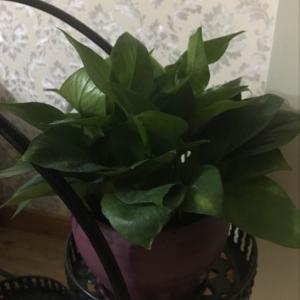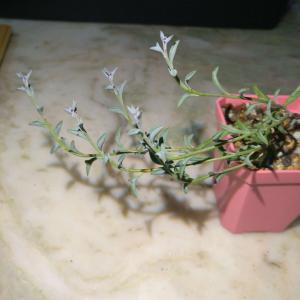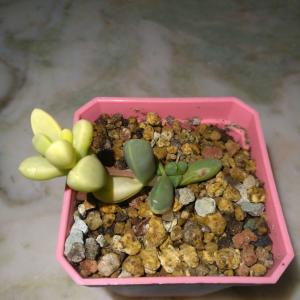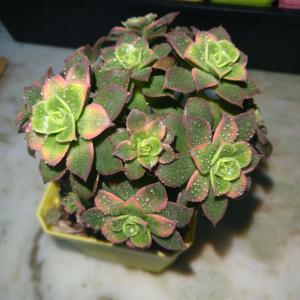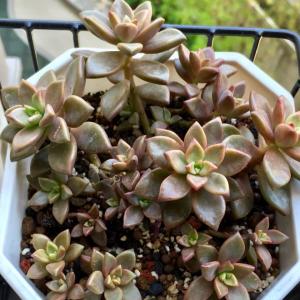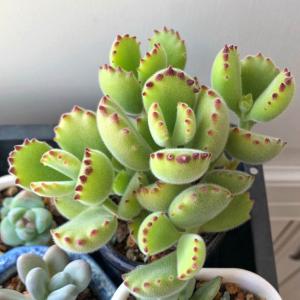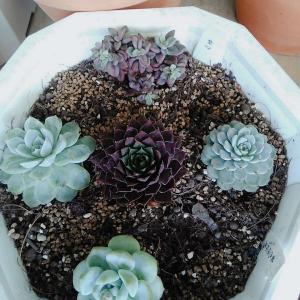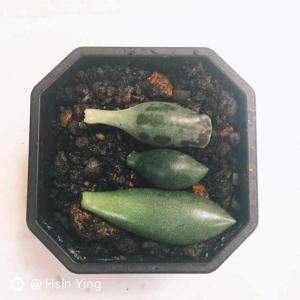文章
Miss Chen
2018年03月26日

Description: This perennial wildflower is 2½-6' tall with a central stem that becomes branched where the flowerheads occur. This stem is light green to dark purple, slender, terete (round in cross-section), glabrous to sparsely covered with short stiff hairs, and sometimes glaucous. Upper secondary stems have similar characteristics. Pairs of widely spreading opposite leaves occur along the central stem and any secondary stems; each pair of leaves rotates 90° from the pair of leaves below. Leaf blades are 2-6" long and ½-2" across; they are lanceolate-oblong to ovate-oblong in shape, and either toothless or with widely spaced teeth along their short-ciliate margins. The base of each leaf blade is rounded-truncate, while its tip is long and gradually tapering. The upper surface of the leaf blades is yellowish green to medium green and sparsely to moderately covered with short stiff hairs, while the pale lower surface is short-pubescent, especially along the major veins. Three prominent veins join together at the base of each leaf blade. The leaves are sessile or they have short ascending petioles (up to 1/8" or 3 mm. long).
The central and secondary stems terminate in flowerheads on slender peduncles. Individual flowerheads are 1½-3" across, consisting of 8-15 ray florets that surround numerous disk florets. The yellow corollas of the ray florets are petal-like and widely spreading.. The yellow corollas of the disk florets are narrowly tubular (less than 1/8" or 3 mm. long) with 5 spreading lobes. At the base of each flowerhead, there are light green phyllaries (floral bracts) that are arranged in several overlapping series. Individual phyllaries are linear-lanceolate and ciliate along their margins; the outer phyllaries are widely spreading or recurved when the flowerheads bloom. The peduncles of the flowerheads resemble the stems, except they are more likely to have short stiff hairs. The blooming period occurs from mid-summer to early fall for about 2 months. Afterwards, the disk florets are replaced by achenes about 2 mm. long; these achenes are ovoid-oblongoid and somewhat flattened. At the apex of each achene, there is a pair of tiny chaffy scales that easily become detached. The root system is long-rhizomatous. Vegetative colonies of plants are often formed by the rhizomes.
Cultivation: The preference is full or partial sun, moist to dry-mesic conditions, and soil that is loamy, sandy, or rocky. This wildflower is easy to cultivate, although it may spread aggressively.
Distribution MapRange & Habitat: The native Woodland Sunflower is common in NE and SE Illinois, while in the rest of the state it is occasional. Habitats include upland rocky woodlands, sandy woodlands, thinly wooded bluffs, upland savannas and sandy savannas, woodland borders, sandy and non-sandy thickets, limestone glades, hill prairies, and moist to dry-mesic sand prairies. While this sunflower is normally found in relatively dry upland habitats, sometimes it also occurs in moist sandy habitats. Occasional wildfires tend to increase populations of Woodland Sunflower as this reduces competition from woody vegetation.
Faunal Associations: The nectar and pollen of the flowers attract a wide variety of insects. The following bees are specialist pollinators (oligoleges) of Woodland Sunflower and other sunflowers: Andrena accepta, Andrena aliciae, Andrena helianthi, Dufourea marginatus, Melissodes agilis, and Pseudopanurgus rugosus. Other floral visitors include long-tongued bees (honeybees, bumblebees, digger bees, leaf-cutting bees, cuckoo bees, etc.), short-tongued bees (Halictid bees and Andrenid bees), miscellaneous wasps, miscellaneous flies (Syrphid flies, bee flies, thick-headed flies, etc.), butterflies and skippers, and Chauliognathus pennsylvanicus (Goldenrod Soldier Beetle). Other insects feed on the foliage, bore through the stems, suck plant juices, etc., from sunflowers. These species include caterpillars of the butterflies Chlosyne nycteis (Silvery Checkerspot), Chlosyne gorgone (Gorgon Checkerspot), and Vanessa cardui (Painted Lady); the caterpillars of Cochylis hospes (Banded Sunflower Moth), Papaipema necopina (Sunflower Borer Moth), Stiria rugifrons (Sunflower Seed Copper), and other moths also feed on these wildflowers (see Moth Table). Sunflowers are important host plants for many aphids, treehoppers, leafhoppers, plant bugs, leaf beetles, scarab beetles, the larvae of weevils, the larvae of midges and other small flies, grasshoppers, and other insects (see Insect Table). Some vertebrate animals use sunflowers as a food source. The seeds of these wildflowers are eaten by the Hungarian Partridge, Bobwhite, Mourning Dove, Eastern Goldfinch, Tufted Titmouse, Harris Sparrow, and many other birds. Small mammals that occasionally eat the seeds include the Gray Squirrel and other tree squirrels, Thirteen-Lined Ground Squirrel, Meadow Vole, White-Footed Mouse, and Plains Pocket Gopher. This gopher also feeds on the rhizomes of sunflowers in relatively dry sandy areas. The Cottontail Rabbit browses on the foliage of seedlings and lower leaves of mature plants, while the White-Tailed Deer occasionally chomps off the stems and upper leaves of mature plants. Because the Woodland Sunflower and other sunflowers are relatively tall and often form dense colonies, they provide good ground cover for many kinds of wildlife.

Photographic Location: A moist sand prairie at the Indiana Dunes National Lakeshore in NW Indiana.
Comments: The Woodland Sunflower is easily identified by its sessile, or nearly sessile, opposite leaves. Other sunflowers (Helianthus spp.) have longer petioles. Its stems are usually hairless or mostly hairless, unlike Helianthus hirsutus (Hairy Sunflower) and some other species in this genus. Compared to some narrow-leaved sunflowers that occur in prairies, the leaf bases of Woodland Sunflower are more broad and nearly truncate. Some parasitic plants that occasionally attach their haustoria (root-like extensions) to sunflowers and other species in the Aster family include Cuscuta glomerata (Rope Dodder) and other Cuscuta spp. (generally in moist areas that are often sandy), and Orobanche ludoviciana (Prairie Broomrape) and other Orobanche spp. (generally in dry areas that are often sandy). These parasitic plants can significantly weaken the host plants to which they become attached.
The central and secondary stems terminate in flowerheads on slender peduncles. Individual flowerheads are 1½-3" across, consisting of 8-15 ray florets that surround numerous disk florets. The yellow corollas of the ray florets are petal-like and widely spreading.. The yellow corollas of the disk florets are narrowly tubular (less than 1/8" or 3 mm. long) with 5 spreading lobes. At the base of each flowerhead, there are light green phyllaries (floral bracts) that are arranged in several overlapping series. Individual phyllaries are linear-lanceolate and ciliate along their margins; the outer phyllaries are widely spreading or recurved when the flowerheads bloom. The peduncles of the flowerheads resemble the stems, except they are more likely to have short stiff hairs. The blooming period occurs from mid-summer to early fall for about 2 months. Afterwards, the disk florets are replaced by achenes about 2 mm. long; these achenes are ovoid-oblongoid and somewhat flattened. At the apex of each achene, there is a pair of tiny chaffy scales that easily become detached. The root system is long-rhizomatous. Vegetative colonies of plants are often formed by the rhizomes.
Cultivation: The preference is full or partial sun, moist to dry-mesic conditions, and soil that is loamy, sandy, or rocky. This wildflower is easy to cultivate, although it may spread aggressively.
Distribution MapRange & Habitat: The native Woodland Sunflower is common in NE and SE Illinois, while in the rest of the state it is occasional. Habitats include upland rocky woodlands, sandy woodlands, thinly wooded bluffs, upland savannas and sandy savannas, woodland borders, sandy and non-sandy thickets, limestone glades, hill prairies, and moist to dry-mesic sand prairies. While this sunflower is normally found in relatively dry upland habitats, sometimes it also occurs in moist sandy habitats. Occasional wildfires tend to increase populations of Woodland Sunflower as this reduces competition from woody vegetation.
Faunal Associations: The nectar and pollen of the flowers attract a wide variety of insects. The following bees are specialist pollinators (oligoleges) of Woodland Sunflower and other sunflowers: Andrena accepta, Andrena aliciae, Andrena helianthi, Dufourea marginatus, Melissodes agilis, and Pseudopanurgus rugosus. Other floral visitors include long-tongued bees (honeybees, bumblebees, digger bees, leaf-cutting bees, cuckoo bees, etc.), short-tongued bees (Halictid bees and Andrenid bees), miscellaneous wasps, miscellaneous flies (Syrphid flies, bee flies, thick-headed flies, etc.), butterflies and skippers, and Chauliognathus pennsylvanicus (Goldenrod Soldier Beetle). Other insects feed on the foliage, bore through the stems, suck plant juices, etc., from sunflowers. These species include caterpillars of the butterflies Chlosyne nycteis (Silvery Checkerspot), Chlosyne gorgone (Gorgon Checkerspot), and Vanessa cardui (Painted Lady); the caterpillars of Cochylis hospes (Banded Sunflower Moth), Papaipema necopina (Sunflower Borer Moth), Stiria rugifrons (Sunflower Seed Copper), and other moths also feed on these wildflowers (see Moth Table). Sunflowers are important host plants for many aphids, treehoppers, leafhoppers, plant bugs, leaf beetles, scarab beetles, the larvae of weevils, the larvae of midges and other small flies, grasshoppers, and other insects (see Insect Table). Some vertebrate animals use sunflowers as a food source. The seeds of these wildflowers are eaten by the Hungarian Partridge, Bobwhite, Mourning Dove, Eastern Goldfinch, Tufted Titmouse, Harris Sparrow, and many other birds. Small mammals that occasionally eat the seeds include the Gray Squirrel and other tree squirrels, Thirteen-Lined Ground Squirrel, Meadow Vole, White-Footed Mouse, and Plains Pocket Gopher. This gopher also feeds on the rhizomes of sunflowers in relatively dry sandy areas. The Cottontail Rabbit browses on the foliage of seedlings and lower leaves of mature plants, while the White-Tailed Deer occasionally chomps off the stems and upper leaves of mature plants. Because the Woodland Sunflower and other sunflowers are relatively tall and often form dense colonies, they provide good ground cover for many kinds of wildlife.

Photographic Location: A moist sand prairie at the Indiana Dunes National Lakeshore in NW Indiana.
Comments: The Woodland Sunflower is easily identified by its sessile, or nearly sessile, opposite leaves. Other sunflowers (Helianthus spp.) have longer petioles. Its stems are usually hairless or mostly hairless, unlike Helianthus hirsutus (Hairy Sunflower) and some other species in this genus. Compared to some narrow-leaved sunflowers that occur in prairies, the leaf bases of Woodland Sunflower are more broad and nearly truncate. Some parasitic plants that occasionally attach their haustoria (root-like extensions) to sunflowers and other species in the Aster family include Cuscuta glomerata (Rope Dodder) and other Cuscuta spp. (generally in moist areas that are often sandy), and Orobanche ludoviciana (Prairie Broomrape) and other Orobanche spp. (generally in dry areas that are often sandy). These parasitic plants can significantly weaken the host plants to which they become attached.
0
0
文章
Miss Chen
2018年03月26日

Description: This herbaceous perennial plant is 1½–2½' tall, branching occasionally. The round stems are light green and covered with coarse spreading hairs. Both basal and cauline leaves are produced; the cauline leaves are alternate, becoming smaller as they ascend the stems. The basal and lower cauline leaves are oddly pinnate (often with 5 leaflets), while the upperFlower, Stems, & Leaves cauline leaves are trifoliate or simple. The simple leaves and leaflets of the compound leaves are up to 3" long and 2½" across. They are lanceolate to ovate-oval, coarsely serrated or shallowly cleft along the margins, and largely hairless. Sometimes the leaves and leaflets are deeply cleft into 2 or 3 lobes. The terminal leaflet is larger in size than the lateral leaflets. The basal and lower cauline leaves have stout petioles, while the upper cauline leaves are nearly sessile. At the base of each petiole, there is a pair of leafy stipules that are cleft or dentate; each stipule is up to ½" long. The upper stems individually terminate in 1-3 flowers; sometimes single flowers are produced from the axils of the upper leaves. Each flower develops from a stalk (peduncle) up to 3" long; this stalk is covered with coarse spreading hairs. Each flower is about ½" across, consisting of 5 petals that are white or cream, 5 triangular green sepals, and several stamens surrounding a large cluster of green carpels with elongated styles. The petals are shorter than the sepals. The anthers are usually dull yellow or tan. The receptacle of the flower (underneath the carpels) is hairless or nearly so. The blooming period occurs from late spring to mid-summer and lasts about a month. There is no noticeable floral scent. Each flower is replaced by a spheroid cluster of achenes with elongated styles that are hooked at their tips. This fruiting cluster is about ¾" across; it is initially green, but eventually turns brown. The root system consists of a taproot and rhizomes; vegetative offsets are often formed.
Cultivation: The preference is partial sun, moist to mesic conditions, and soil containing loam or sandy loam. Full sun and light shade are also tolerated.
Range & Habitat: The native Rough Avens occurs occasionally in central and northern Illinois, but it is absent from the southern and southwestern areas of the state (see Distribution Map). Habitats include savannas, thickets, woodland borders, and moist meadows. Sometimes it is found in thickets and prairie remnants along railroads and roadsides.
Faunal Associations: Information about floral-faunal relationships for this species is rather limited. They are probably similar to those of Geum canadense (White Avens). The nectar and pollen of the flowers probably attract small bees, wasps, and flies. Insects that feed on the foliage of Geum spp. (Avens) include the aphids Acyrthosiphon pseudodirhodum, Macrosiphum gei, Macrosiphum pallidum, and Macrosiphum pseudorosae. In addition, larvae of a moth, Tinagma obscurofasciella, mine the leaves. The achenes with hooked styles can cling to the fur of mammals, feathers of birds, and clothing of humans; by this means, they can be distributed across considerable distances.

Photographic Location: Between a thicket and prairie remnant along a railroad in Champaign County, Illinois.
Comments: Rough Avens blooms a little later than Geum vernum (Spring Avens), but a little earlier than Geum canadense (White Avens) and Geum virginianum (Pale Avens). It can be confused with White Avens. However, Rough Avens has petals that are shorter than the sepals and its flowering stalks have coarse spreading hairs. White Avens has petals that are as long or longer than the sepals and its flowering stalks are finely pubescent. Pale Avens also has an appearance that is similar to Rough Avens; it is restricted to southern Illinois. Pale Avens has slightly smaller flowers (about 1/3" across) with cream petals that are much shorter than the sepals. The receptacles of its flowers are bristly-hairy, while the receptacles of Rough Avens are hairless or nearly so.
Cultivation: The preference is partial sun, moist to mesic conditions, and soil containing loam or sandy loam. Full sun and light shade are also tolerated.
Range & Habitat: The native Rough Avens occurs occasionally in central and northern Illinois, but it is absent from the southern and southwestern areas of the state (see Distribution Map). Habitats include savannas, thickets, woodland borders, and moist meadows. Sometimes it is found in thickets and prairie remnants along railroads and roadsides.
Faunal Associations: Information about floral-faunal relationships for this species is rather limited. They are probably similar to those of Geum canadense (White Avens). The nectar and pollen of the flowers probably attract small bees, wasps, and flies. Insects that feed on the foliage of Geum spp. (Avens) include the aphids Acyrthosiphon pseudodirhodum, Macrosiphum gei, Macrosiphum pallidum, and Macrosiphum pseudorosae. In addition, larvae of a moth, Tinagma obscurofasciella, mine the leaves. The achenes with hooked styles can cling to the fur of mammals, feathers of birds, and clothing of humans; by this means, they can be distributed across considerable distances.

Photographic Location: Between a thicket and prairie remnant along a railroad in Champaign County, Illinois.
Comments: Rough Avens blooms a little later than Geum vernum (Spring Avens), but a little earlier than Geum canadense (White Avens) and Geum virginianum (Pale Avens). It can be confused with White Avens. However, Rough Avens has petals that are shorter than the sepals and its flowering stalks have coarse spreading hairs. White Avens has petals that are as long or longer than the sepals and its flowering stalks are finely pubescent. Pale Avens also has an appearance that is similar to Rough Avens; it is restricted to southern Illinois. Pale Avens has slightly smaller flowers (about 1/3" across) with cream petals that are much shorter than the sepals. The receptacles of its flowers are bristly-hairy, while the receptacles of Rough Avens are hairless or nearly so.
0
0
文章
Miss Chen
2018年03月26日

Description: This herbaceous perennial plant is about 1½–2½' tall, branching occasionally. The upper stems are light green and pubescent, while the lower stems are often brownish green and coarsely hairy. These stems are round in circumference, rather than angular. There are both basal leaves (produced during the spring) and alternate cauline leaves. The basal leaves are produced in a low rosette up to 6" across. The lower cauline leaves are trifoliate, while the upper cauline leaves are usually simple; they are rather variable in shape. Both simple leaves and leaflets of the compound leaves are up to 4" long and 3" across, becoming smaller as they ascend the stems. They are medium green, lanceolate to oval-ovate, coarsely serrated, and often cleft into 3 major lobes. Their margins are often shallowly cleft or incised as well.
The basal leaves are similar to the cauline leaves, except they are dark green and odd-pinnate with more than 3 leaflets. The wrinkled upper surface of each leaf is either hairless or it has scattered hairs that are very short and bristly; the lower surface is either hairless or it has a few hairs along the major veins. The lower leaves have stout petioles up to 1" long, while the upper leaves have either short petioles or they are sessile. At the base of each petiole, there are a pair of leafy stipules up to ½" long that are usually toothed along their margins. Each upper stem often terminates in an inflorescence of 1-3 flowers; sometimes individual flowers are produced from the axils of the upper leaves. The peduncles are up to 3" long and finely pubescent; they divide into shorter pedicels when there is more than one flower in the inflorescence.

Each flower is about ½" across, consisting of 5 bright white petals, 5 triangular green sepals, and numerous stamens surrounding a cluster of green carpels with elongated styles. The sepals are the same length or shorter than the petals; they are initially spreading, but curve downward with age. The anthers of the stamens are initially white, but they soon turn brown. The receptacle of each flower (the surface underneath the carpels) is pubescent. The blooming period occurs during the summer and lasts about 1-2 months. There is no noticeable floral scent. Each flower is replaced by a spheroid cluster of achenes with persistent styles that are hooked at their tips. This fruiting cluster spans about ¾" across; it is initially green, but eventually turns brown. The root system consists of a taproot and rhizomes; from the latter, vegetative offsets can be produced. This plant occasionally forms loose colonies.

Cultivation: The preference is light shade or partial sun, moist to slightly dry conditions, and a loam or clay-loam soil. At favorable sites, this plant can spread aggressively and is somewhat weedy. White Avens is able to grow underneath Black Walnut trees (Juglans nigra) because of its tolerance to the phytotoxic chemicals that are released by the fallen leaves and roots of this tree.
Range & Habitat: The native White Avens is a common plant that occurs in every county of Illinois (see Distribution Map). Habitats include mesic deciduous woodlands, woodland borders, thickets, partially shaded seeps, fence rows with woody vegetation, powerline clearances in wooded areas, and edges of yards. Sometimes White Avens can be found in disturbed meadows and tall-grass prairies, but this is less typical. It adapts well to disturbed areas.

Faunal Associations: The flowers attract various insects, including bees, wasps, flies, and beetles. These insects suck nectar; some bees also collect pollen, while Syrphid flies often feed on the pollen. Insects that feed on the foliage of White Avens and other Aven species (Geum spp.) consist primarily of aphids, including Acyrthosiphon pseudodirhodum, Amphorophora rossi (White Avens is the preferred host plant), Macrosiphum gei, Macrosiphum pallidum, and Macrosiphon pseudorosae. In addition, the larvae of a moth, Tinagma obscurofasciella, mine the leaves. Apparently the foliage of White Avens is not attractive to mammalian herbivores; it is not often grazed by White-Tailed Deer. The hooked achenes can cling to the fur of mammals, feathers of birds, and clothing of humans; by this means, they are distributed far and wide.
Photographic Location: The photographs were taken near a powerline clearance at Busey Woods in Urbana, Illinois, at a tallgrass prairie of Meadowbrook Park in the same city, and along a woodland border at Chief Shemauger Park in the same city.

Comments: The flowers of White Avens resemble those of various Rubus spp. (Blackberries), except that they are a little smaller. The structure of its flowers is typical of many species in the Rose family. This is probably the most common Geum sp. (Avens) in Illinois. In general, White Avens can be distinguished from other species of Avens by its bright white petals, which are as long or longer than the sepals. Its lower cauline leaves are trifoliate, whereas the lower cauline leaves of other species of Avens are often oddly pinnate with 5 or more leaflets. In particular, Geum laciniatum (Rough Avens) resembles White Avens and occurs in many of the same habitats. However, the petals of its flowers are shorter than the sepals. The flowering stalks of White Avens are finely pubescent, while the flowering stalks of Rough Avens have coarse spreading hairs. Another species, Avens virginianum (Pale Avens), is restricted to southern Illinois. The petals of its flowers are cream rather than bright white, and they are substantially shorter than the sepals. Unlike White Avens, its lower cauline leaves are often odd-pinnate with 5 leaflets.
The basal leaves are similar to the cauline leaves, except they are dark green and odd-pinnate with more than 3 leaflets. The wrinkled upper surface of each leaf is either hairless or it has scattered hairs that are very short and bristly; the lower surface is either hairless or it has a few hairs along the major veins. The lower leaves have stout petioles up to 1" long, while the upper leaves have either short petioles or they are sessile. At the base of each petiole, there are a pair of leafy stipules up to ½" long that are usually toothed along their margins. Each upper stem often terminates in an inflorescence of 1-3 flowers; sometimes individual flowers are produced from the axils of the upper leaves. The peduncles are up to 3" long and finely pubescent; they divide into shorter pedicels when there is more than one flower in the inflorescence.

Each flower is about ½" across, consisting of 5 bright white petals, 5 triangular green sepals, and numerous stamens surrounding a cluster of green carpels with elongated styles. The sepals are the same length or shorter than the petals; they are initially spreading, but curve downward with age. The anthers of the stamens are initially white, but they soon turn brown. The receptacle of each flower (the surface underneath the carpels) is pubescent. The blooming period occurs during the summer and lasts about 1-2 months. There is no noticeable floral scent. Each flower is replaced by a spheroid cluster of achenes with persistent styles that are hooked at their tips. This fruiting cluster spans about ¾" across; it is initially green, but eventually turns brown. The root system consists of a taproot and rhizomes; from the latter, vegetative offsets can be produced. This plant occasionally forms loose colonies.

Cultivation: The preference is light shade or partial sun, moist to slightly dry conditions, and a loam or clay-loam soil. At favorable sites, this plant can spread aggressively and is somewhat weedy. White Avens is able to grow underneath Black Walnut trees (Juglans nigra) because of its tolerance to the phytotoxic chemicals that are released by the fallen leaves and roots of this tree.
Range & Habitat: The native White Avens is a common plant that occurs in every county of Illinois (see Distribution Map). Habitats include mesic deciduous woodlands, woodland borders, thickets, partially shaded seeps, fence rows with woody vegetation, powerline clearances in wooded areas, and edges of yards. Sometimes White Avens can be found in disturbed meadows and tall-grass prairies, but this is less typical. It adapts well to disturbed areas.

Faunal Associations: The flowers attract various insects, including bees, wasps, flies, and beetles. These insects suck nectar; some bees also collect pollen, while Syrphid flies often feed on the pollen. Insects that feed on the foliage of White Avens and other Aven species (Geum spp.) consist primarily of aphids, including Acyrthosiphon pseudodirhodum, Amphorophora rossi (White Avens is the preferred host plant), Macrosiphum gei, Macrosiphum pallidum, and Macrosiphon pseudorosae. In addition, the larvae of a moth, Tinagma obscurofasciella, mine the leaves. Apparently the foliage of White Avens is not attractive to mammalian herbivores; it is not often grazed by White-Tailed Deer. The hooked achenes can cling to the fur of mammals, feathers of birds, and clothing of humans; by this means, they are distributed far and wide.
Photographic Location: The photographs were taken near a powerline clearance at Busey Woods in Urbana, Illinois, at a tallgrass prairie of Meadowbrook Park in the same city, and along a woodland border at Chief Shemauger Park in the same city.

Comments: The flowers of White Avens resemble those of various Rubus spp. (Blackberries), except that they are a little smaller. The structure of its flowers is typical of many species in the Rose family. This is probably the most common Geum sp. (Avens) in Illinois. In general, White Avens can be distinguished from other species of Avens by its bright white petals, which are as long or longer than the sepals. Its lower cauline leaves are trifoliate, whereas the lower cauline leaves of other species of Avens are often oddly pinnate with 5 or more leaflets. In particular, Geum laciniatum (Rough Avens) resembles White Avens and occurs in many of the same habitats. However, the petals of its flowers are shorter than the sepals. The flowering stalks of White Avens are finely pubescent, while the flowering stalks of Rough Avens have coarse spreading hairs. Another species, Avens virginianum (Pale Avens), is restricted to southern Illinois. The petals of its flowers are cream rather than bright white, and they are substantially shorter than the sepals. Unlike White Avens, its lower cauline leaves are often odd-pinnate with 5 leaflets.
0
0



